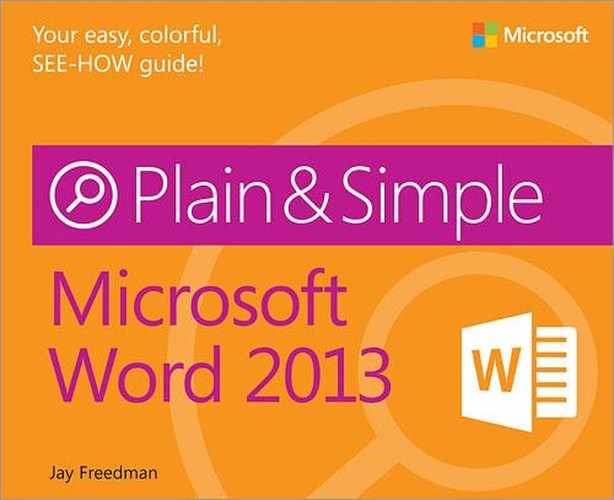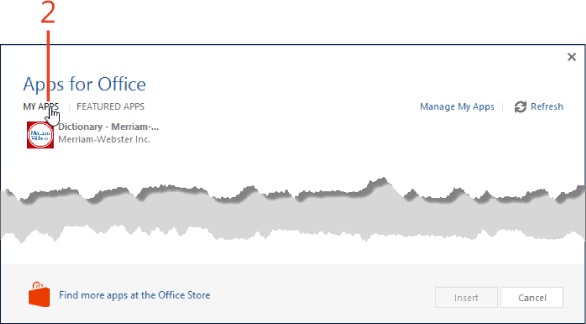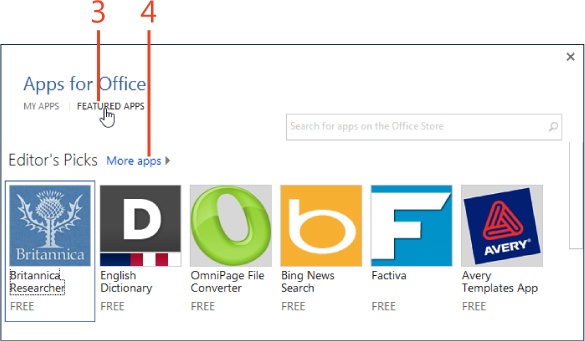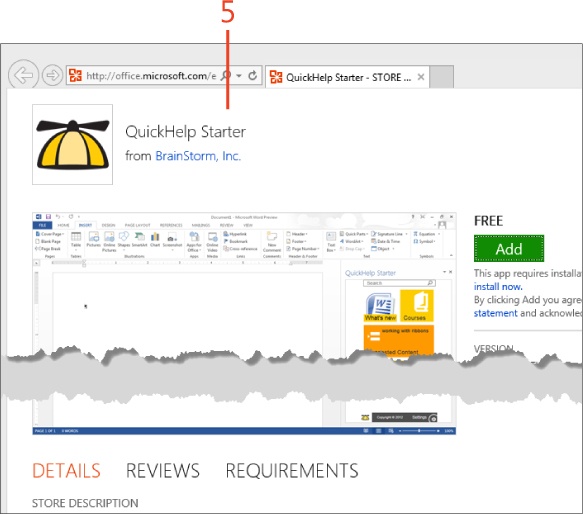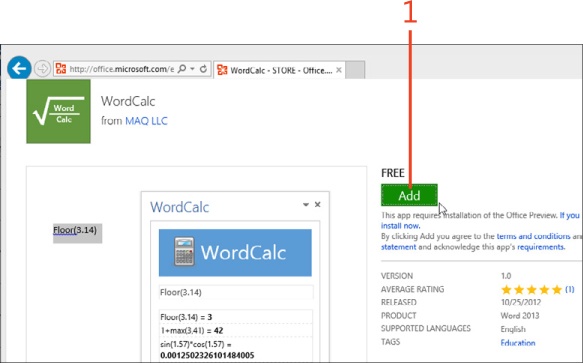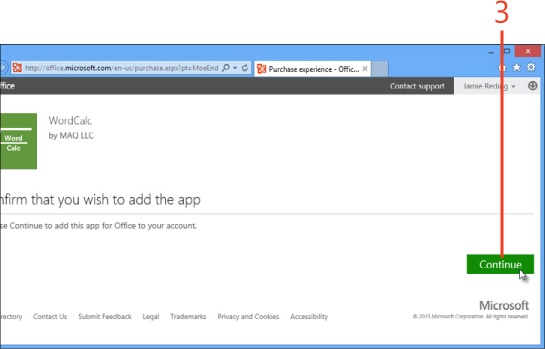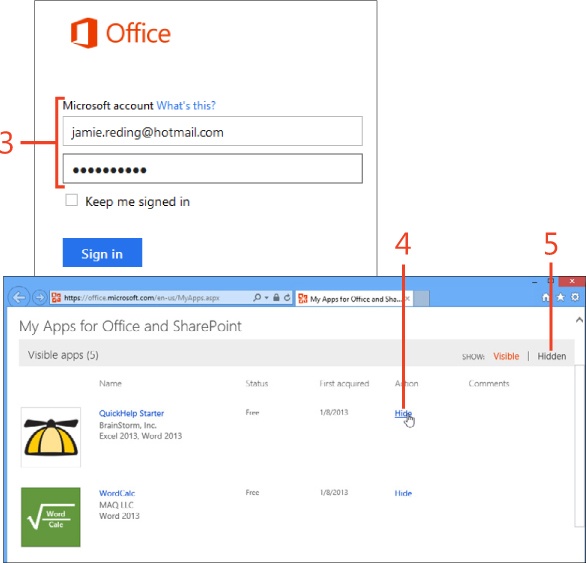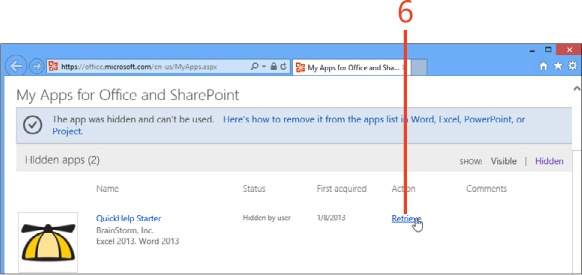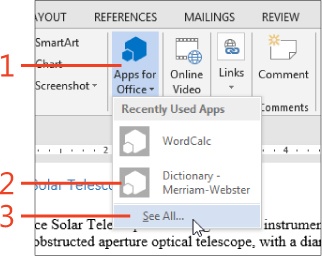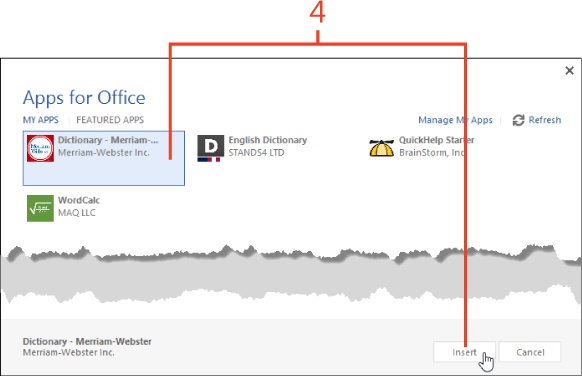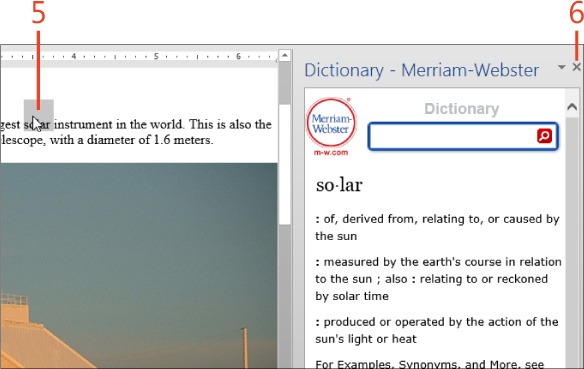Chapter 16. Installing and using Apps for Office
In This section:
Microsoft Office 2013 includes a new feature called Apps for Office and SharePoint. An App for Office is a web-based program that appears within an Office application’s window and interacts with your documents. Typically, an app recognizes text that you select in a document and displays information about it, which you can insert into the document or use in other ways.
Examples of Apps for Office include dictionaries and reference works, calculators, templates and forms, file format converters, and news. Apps for Office are available only online from the Microsoft Office Store. Many of them cost nothing to install and use; others are paid products. New Apps for Office are frequently added to the Office Store.
Because the app is stored on a server in the cloud, it’s available to you anywhere that you can log on to your Microsoft Account.
Adding an app from the Office Store
You can add an App for Office to your Microsoft Account directly from within the Microsoft Word 2013 program, or you can visit the website for the Office Store.
Some Apps for Office can be used in Word 2013 and in other Office 2013 programs. However, many apps are specific to one Office program. You can click a link on the Office Store to narrow the display to only the apps that are compatible with Word.
Visit the Office Store
On the Insert tab, in the Apps group, click the Apps For Office button.
The top half of the button immediately opens the Apps for Office dialog box. The drop-down arrow in the bottom half of the button opens a gallery of recently used apps (if any), and a See All command at the bottom of the gallery opens the Apps for Office dialog box.
In the Apps For Office dialog box, click the My Apps link to display the apps (if any) that are already associated with your Microsoft Account.
Click the Featured Apps link to display thumbnails of the apps that are current Editor’s Picks. Scroll down to see thumbnails of apps that were most recently added to the Office Store.
In the Featured Apps display, click the More Apps link to open the Office Store website in your default browser.
In either the Apps For Office dialog box or the Office Store website, when you see a thumbnail for an app that seems interesting, click the thumbnail to view a page with a description, a list of requirements, and any reviews that users have submitted.
Install an App for Office
Go to the Office Store as described in Visit the Office Store. In the Office Store website, on the description page for an app that you want to install, click the Add button.
If you aren’t already logged on to your Microsoft Account, enter your name and password.
On the confirmation page, click the Continue button.
Manage Apps for Office
On the Insert tab, in the Apps group, click the top part of the Apps For Office button.
Click the Manage My Apps link.
If you aren’t already logged on to your Microsoft Account, enter your name and password.
If you want to hide an app so that it isn’t offered in the Office applications, in the Action column for that app, click the Hide link.
If you have hidden any apps and you want to make them visible again, click the Hidden link.
To make a hidden app visible, in the Action column, click the Retrieve link for that app.
Using an app in a document
In Word 2013, an App for Office opens a task pane that contains the text boxes, buttons, or other objects that you use to work with the app. Apps vary widely in the ways that they interact with your documents. Typically, though, they accept any text that you select in the document as their input, and they display some text in the task pane as a result. You might be able to click a button to make the task pane’s result replace the selected text, or you might need to copy the result to the clipboard and paste it where you want it.
Activate an app
On the Insert tab, in the Apps group, click the drop-down arrow on the Apps For Office button.
If the app you want to activate appears in the drop-down list, click its name and continue at step 5.
At the bottom of the Apps For Office drop-down list, click the See All command. (Or, you can click the top part of the Apps For Office button.)
Click the icon or name of the app that you want to activate and then click the Insert button.
Select text in your document, or click a button or icon in the app’s task pane, depending on the app’s instructions.
To close the task pane, in its upper-right corner, click the X button.
